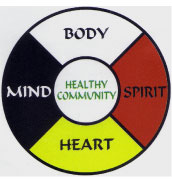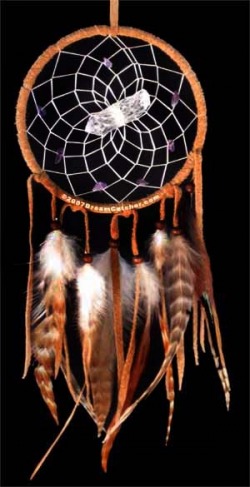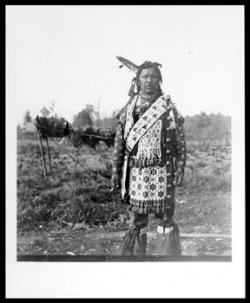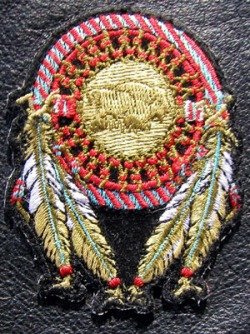Midewiwin: “The Original Way”
Ojibwe Religion

“To the early Native people, education was a part of everyday life. Their books were the rocks, the rivers and lakes, the trees and roots, the sun, the moon and the stars. It was from these elements that they fashioned their material culture. Creative life was in everything. One loved nature and nature loved in return. The people believed in only one Supreme Being, The Creator, whose mighty power governs and directs the beginning and end of all things.”
-Harold Flett
The Ojibwe religion infiltrated into every part of life. The beliefs held by each tribe member influenced the way he viewed himself and viewed the world around. Religion gave deeper meaning to every plant, animal, and dream. The religion of the Ojibwe brought special meaning to everything in the eyes of the Ojibwe people.
The Objibwe beliefs centered around the belief in Gitchie Manitou, the “Supreme Being,” “Master,” and “Mystery” of all that exists. In the eyes of the Ojibwe, everything was spiritual and played a role in a great spiritual interaction. The Ojibwe saw themselves as another element of nature; no greater and no less than everything else on the earth. Thus, the Ojibwe held animals and all of nature in very high regard. A set of rights was even set in place for birds and animals:
• Right to man’s love and respect
• Right to man’s guardianship
• Right to live a full life
• Fight to grow and multiply
• Right to unmolested freedom
• Right to share man’s fellowship
• Fight to share the goodness of creation
The Ojibwe sought to live in harmony with all nature and respect all dwellers of the earth. They saw their existence as intertwined with that of the rest of the earth, so they accepted their food and provisions from the earth with great thanks. A prayer of thanks was offered up to Gitchie Manitou for every animal or plant they took for food or other basic needs (Flett).
The belief in the spirituality of all things caused the Ojibwe people the treat everything with very high regard and even place spiritual importance on different animals such as the eagle. The eagle was seen as the “prayer carrier” and messenger. The eagle was believed to carry the prayers of the Ojibwe people up to the Creator. The Objibwe envisioned themselves turning into eagles as they prayed for another. The eagle was given great importance during healing ceremonies where the eagle was seen as carrying the sickness up to the Creator to heal the person. Because of the spiritual significance of the eagle, one was to offer up a prayer with tobacco in his hand whenever he saw an eagle (Flett).
The use of plants and animals for food, clothing, and other things used by the tribe was a constant reminder of the interconnectedness with nature. The Ojibwe humbly and thankfully accepted what was given to them through nature. Due to this spiritual importance on the different animals the Ojibwe used, certain parts of some animals were also regarded with special significance. For instance, the bear claw symbolized healing. To acquire a bear claw the tribe member had to go to great lengths to earn the claw, but once the claw was obtained, the wearer was given great respect and honor. The same is true with the eagle feather. The eagle feather symbolized strength and required hard work to obtain but also brought respect and acknowledgment to the wearer. Often times wearing these different items distinguished the more important tribe members from the lesser (Flett).
The use of tobacco was also another major religious symbol. Tobacco was a key religious element in the religious practices. The tobacco symbolized honesty; honesty between two people talking or talking to the spirit world. The tobacco was said to go ahead of a request, prayer, or question that will be received in a peaceful way. When making a request, tobacco is the most honorable and respectful way of presenting your request (Flett).
An important feature of the Ojibwe religious lifestyle was the participation in various ceremonies. Ceremonies all carried great importance in the Ojibwe lifestyle and involved various religious rituals. Some of the common Ojibwe ceremonies are the fasting vision quests, initiation or rite of passage ceremonies, the Shake Tent ceremony, Sunrise ceremony, and the most well known: Pow Wow. Each of these held religious significance. These ceremonies included different spiritual symbols such as the eagle or other icons and are a gathering of the tribe often directed towards gaining more spiritual insight (Flett).
Dreams

Although religion was a corporate activity, much of the focus was on individual spiritual growth. One of the focal points of the Ojibwe religion was gaining insight through dreams or visions. Whole ceremonies were dedicated to acquire these dreams. Fasting, or giving up of certain necessities for a certain length of time, was a common practice used to enhance one’s ability to access different dreams or visions (Flett).
The tribe set aside certain icons to emphasize the importance of dreams. The dream catchers most recognize are objects used to catch good dreams. Also, the tribe had a “dreamer set in place. A dreamer was a tribal visionary who had access to dreams of strong importance and significance; often times these dreams were prophetic and used to foretell some oncoming danger (Flett).
Rituals were used at certain points in life or of the year set aside for dream ceremonies. Adolescents usually fasted to get dreams for insight for their future conduct. These dreams could come in sleep as well as daytime visions. Annual fasts or retreats were also held as a more corporate practice to renew vision or reflect on life (Flett).
Sweat lodges played a significant role in bringing dreams as well as healing. In the use of sweat lodges for dream, water was poured over hot rocks to produce steam and all of the doors were closed off -similar to a sauna. Sometimes pine or birch bows were added to the rocks. This ritual was said to enhance the occurance of dreams (Flett).
The Grand Medicine Society

Another important aspect of the Ojibwe religion is the Mide priesthood. The priests/priestesses were also called medicine men and medicine women and worked for the better of others and use the sacred drums. The priesthood could be split into 4-8 levels among the priesthood, each level containing a different amount of skill or knowledge. A priest could be a man, woman, or child (Roy).
The one studying to be a medicine man/woman would study the use of different herbs for healing as well as for enhancing spiritual insight. The training could last one year to enter one of the lower levels of the priesthood, but could continue on for up to 20 years to reach a higher level of the priesthood (Roy).
The Great Medicine Dance marked was the initiation point for new priests and marked the beginning of their new role of healer. The Great Medicine Dance lasted anywhere from 1-5 days and was held in large wigwams. The sacred drum and sacred pipe were used at this time. The new priests would bring offerings of blankets, cooking utensils, and wild rice. At this time a great feast was also held. The food served at this feast included: wild rice, fresh or dried blue berries, maple sugar, and dog meat (yikes!). From that point on, the new priest would take his/her place as the tribal healer, and some held the role of handling special ceremonial songs written down on birch bark (Roy).
The medicine men/women used what is called a medicine bundle. Medicine bundles were cloth squares or other materials that contained strips of hide from one or more animals. These strips of animal hide symbolized what level of Mide the holder had reached. The skin could belong to otters, martens, mink or weasel, and the bags contained various objects such as shells, bear claws, glass beads, tobacco, carved figures, dried roots, or herbs (Roy).
| musc_movie_medicine_song.mov | |
| File Size: | 4966 kb |
| File Type: | mov |
Ojibwe Religion Today

The Ojibwe religion of the past has not remained unchanged. As the United States became settled further by Europeans and other immigrants, Christianity was slowly adopted among the tribes. While there are still some followers of the traditional religion, most modern Ojibwe are Roman Catholics or Protestant Episcopalians (Roy).
Works Cited:
Flett, Harold. "Customs and Beliefs." Customs and Beliefs. Chi Ki Ken Da Mun. 19 Apr 2008 <http://www.nald.ca/CLR/chikiken/titleiii.htm>.
Roy, Lorene. "Ojibwa." Ojibwa. 27 Apr 2008 <http://www.everyculture.com/multi/Le-Pa/Ojibwa.html>.
